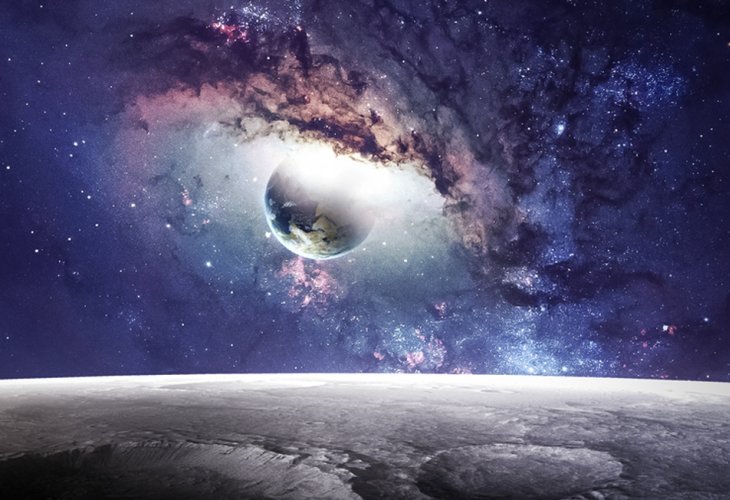In Search of God
Scientific Proof of God’s Existence: The Beginning of the Universe and the Fine-Tuning of Nature
How physics, cosmology, and the laws of nature reveal intelligent design behind creation
 (Photo credit: shutterstock)
(Photo credit: shutterstock)There are, in fact, two separate scientific proofs for the existence of the Creator:
The fact that the universe had a beginning — meaning it could not have caused itself and therefore must have a Creator.
The precise laws of nature that govern the universe — showing intentional design rather than chaos.
These are not the same argument. It is not enough that matter was brought into existence out of nothing; the behavior of that matter also required design. Without the laws of physics, the universe would not function — it would be a shapeless void of scattered particles, drifting aimlessly in the dark, never binding into atoms, stars, or galaxies.
Even after matter came into being, why should it behave with such order and structure? The creation of matter does not explain the existence of natural law. Thus, beyond being the Creator, God is also the Lawgiver — the One who programmed the universe with the precise physical constants necessary for order, stability, and life.
A Universe Designed for Life
Not every universe could support life. A universe without water, oxygen, or stable chemistry could never sustain living beings — let alone complex, intelligent life.
Each law of nature operates in harmony with the others, governed by mathematical equations that include finely tuned constants — exact numerical values that determine the strength and behavior of every physical interaction. Even a minute change in these constants would make the universe lifeless.
Below are examples (scientifically complex but worth noting) of how delicate this balance truly is:
The Fine-Tuning of the Universe: Examples from Physics
The Strong Nuclear Force: If it were weaker by just 2%, protons could not form from quarks. If it were stronger by 2%, the elements essential for life would be unstable and disintegrate.
The Electromagnetic Force: If weaker, electrons would fly off their atomic orbits and molecules couldn’t form. If stronger, orbitals could hold only one electron each, also preventing molecule formation.
Gravity: If slightly stronger, stars like our Sun would be too massive (1.4 times the Sun’s size) and burn out too quickly. If slightly weaker, only tiny stars would form (0.8 times the Sun’s mass), incapable of producing heavy elements needed for life.
The Weak Nuclear Force: If stronger, neutrinos would pass through stellar envelopes and heavy elements wouldn’t be expelled into space. If weaker, neutrinos couldn’t break through, and again, no planets or heavy elements would exist.
The Amount of Mass in the Universe: If there were less mass, helium would never have formed, and without it, no heavy elements. If there were more mass, stars would burn too quickly due to excess deuterium, a catalyst in nuclear reactions.
The Discovery of Fine-Tuning
The concept of fine-tuning was first articulated by physicist and astronomer Professor Martin Rees in his 1989 book “Cosmic Coincidences.” This field of study is now widely known as the Fine-Tuning of the Universe — the observation that every constant in physics is set at a value that allows life to exist.
What Scientists Say About This
Physicist Paul Davies writes: “There is now broad agreement among physicists and cosmologists that the universe is, in several respects, ‘fine-tuned’ for life. However, their conclusion is not that the universe was designed for life, but rather that it happens to be fine-tuned to create the conditions that life accidentally requires.”
(Paul Davies, “How Bio-Friendly Is the Universe?” Int. J. Astrobiol. 2, 115, 2003)
Even when confronted with overwhelming precision, many scientists prefer to attribute it to coincidence, despite the improbability. As evidence mounts, chance becomes the least plausible explanation.
Dark Energy: The Newest Challenge to Randomness
A newer discovery deepens this mystery: dark energy — a mysterious force that makes up about 68% of the total mass-energy of the universe and drives its expansion.
This “invisible energy” has a profound effect on the cosmological constant, the delicate balance that controls the rate of cosmic expansion. Without it, not even a single galaxy could have formed.
Physicist Leonard Susskind observed: “The great mystery is not why dark energy exists, but why there is so little of it. The fact that the entire reality of existence balances on a knife’s edge — if there were even slightly more dark energy, we wouldn’t be here — that is the real mystery.” (Leonard Susskind, quoted in Anil Ananthaswamy, “Is the Universe Fine-Tuned for Life?”)
If the cosmological constant had been even slightly greater, space would have expanded too rapidly for galaxies to form — and life, as we know it, would have been impossible.
The Logical Conclusion: Order Points to a Designer
Even without delving into complex equations, it’s enough to recognize that the universe operates with perfect mathematical precision. Every constant, every law, every ratio — all work together in harmony.
This intricate coordination cannot be the product of random chaos. The universe behaves as though programmed, suggesting not only a beginning, but also an intelligent design behind it.
The fine-tuning of the cosmos stands as a scientific proof of the existence of a Creator — One who both brought the universe into being and designed its laws with infinite wisdom.

